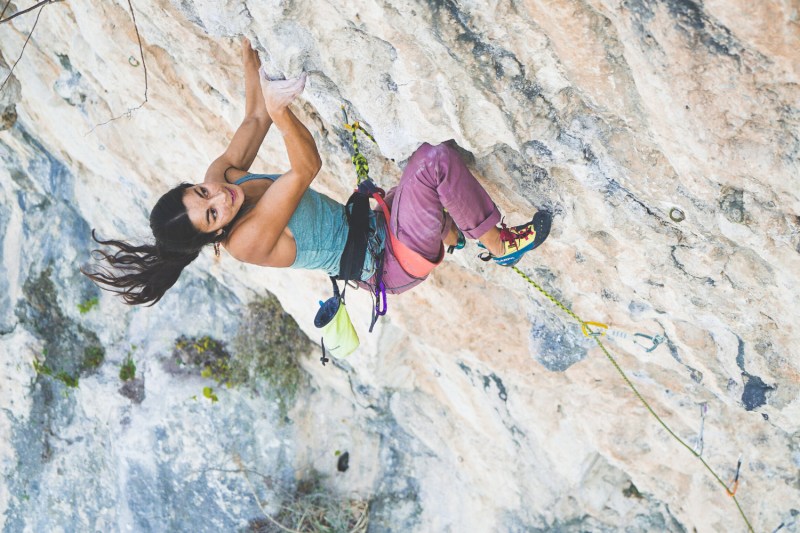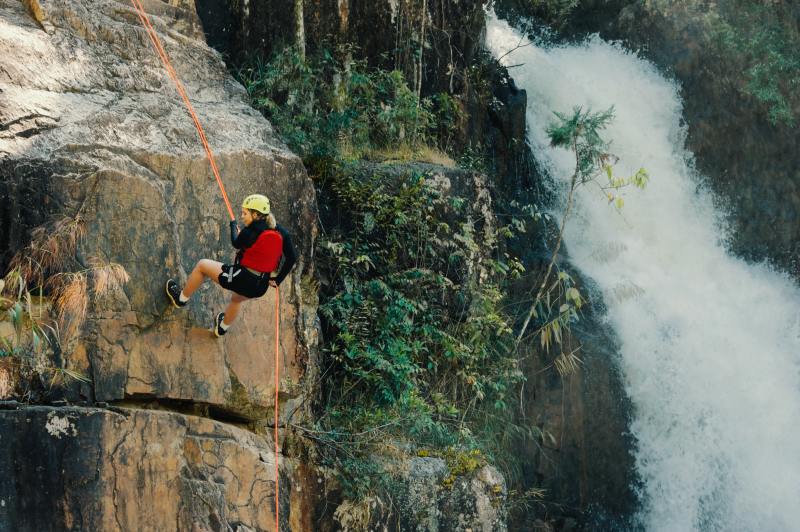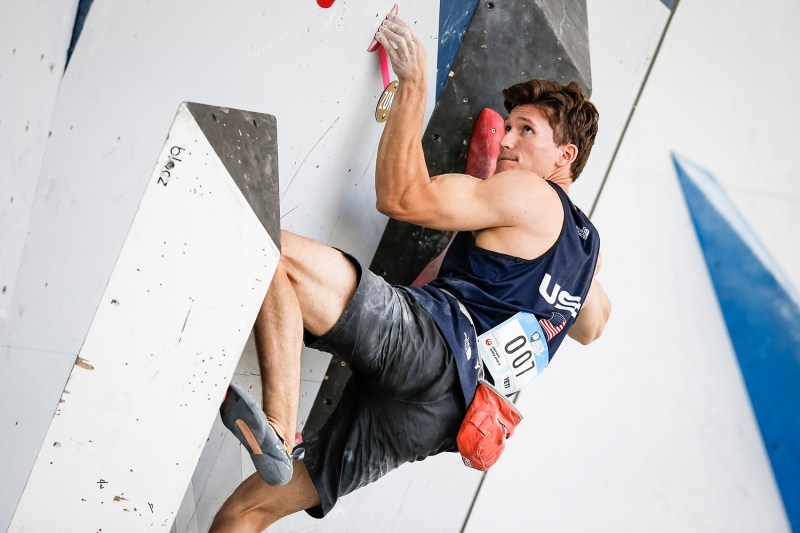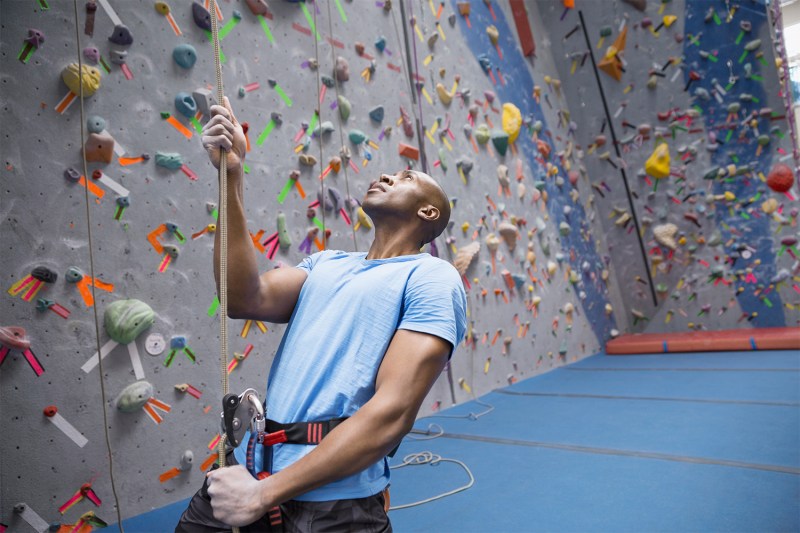
Just like butts to powerlifters, the strongest forearms in the world aren’t posing on stage at Mr. Olympia but gripping the rock that climbers pull on every day. Many beginners start in the sport believing accomplishment runs hand in hand with pull-up strength, said USA Climbing’s National and Olympic Team Physical Therapist Zack DiCristino.
Instead, great climbers rely on technique, foot positioning, and, crucially, grip. “There’s no doubt that grip and finger strength helps you a ton, especially as you get to a higher level,” the physical therapist said, adding that the muscles that determine this strength reside almost entirely between your hand and your elbow. To go higher, you’ve got to train your forearms.
Even if you’re not hanging from The Nose of El Capitan or packing for Tokyo 2020 (the latter of which USA Climbing is currently doing as sport climbing makes its Olympic debut), there’s still much to be said for a strong grip. Beyond the clichéd first handshake in pre-COVID times, conditioned forearms prep the tendons to handle repetitive stress better, thereby lowering the chance of overuse injuries. Whether you’re working in a factory or typing at a keyboard, you should be working out your forearms.
With this in mind, DiCristino took time away from his busy schedule of prepping Team USA’s future Olympians to design a handful of workouts that are efficient, quick, and require little in the way of specialized equipment. Get squeezing.

What are the benefits of rock climbing?
If you love being athletic and getting outdoors, rock climbing could be the sport for you. While it does take a bit of training and education to understand the best way to pursue the activity and be able to progress over time, almost anyone can do it.
If you can rock climb a few times a week consistently, then you may experience the following benefits:
- Strengthens the upper body muscles, such as the back, biceps, and forearms
- Improves endurance
- Allows for improved mental strength and toughness
- Boosts performance in other athletic activities

Finger-flexor isometrics
If you’re new to forearm conditioning, this is the place to start, although with some reservations. Most people should simply grab a stress ball or, even easier, a wet washcloth, squeezing it over the sink. For those who are more experienced, including climbers that have been training for a year or more, you can graduate to the ubiquitous rock rings or hangboards found in the door frames of climbers’ homes around the world.
- For 10 to 15 seconds, squeeze or hang.
- Rest for 2 to 3 minutes (longer if newer, shorter if more experienced).
Complete three or four sets three times a week.

Wrist and finger flexor rolls
These may be the easiest for most people, as they require zero specialized climbing gear. At your gym or in your home, grasp a dumbbell. Then:
- Curl the arm halfway until the forearm is parallel to the ground.
- Ensure the wrist is straight.
- Curl only the palm up, bending the wrist.
- Lower the hand until the wrist extends past neutral and the dumbbell is pointed at the ground.
- Repeat.
Complete three or four sets of six to eight reps three times per week. Rest 2 to 3 minutes between sets.

Forearm pronation and supination
Even if you don’t have a dumbbell at home, DiCristino recommends an everyday hammer as a suitable alternative.
- Start with the hammer or dumbbell in an upright, neutral position, with the thumb pointing at the sky.
- Slowly rotate at the forearm, lowering the hammer so that your palm faces downward.
- Reverse direction, rotating so your palm faces up.
- Repeat.
Complete three to four sets of six to eight reps three times per week. Rest 2 to 3 minutes between sets.

Finger extensions
Search around your gym for a wide resistance band, the kind that is four or five inches long and thin. Then:
- Place the widest part of the band around a closed fist, similar to how Venom coats Spider-Man.
- Straighten and spread your fingers apart.
- Hold for 3 to 5 seconds.
- Relax and then repeat.
Complete eight reps for three sets, three times per week. Rest 2 to 3 minutes between sets.

Weighted wrist extensions
Go light with this one, grasping a dumbbell and laying your forearm flat against a bent knee, bench, table, or other study object. With the palm facing the floor, bend the wrist down. Then:
- Slowly extend the wrist and the fingers against the weight.
- Pause, then return to the start.
- Repeat.
For regular training, complete three to four sets of six to eight reps three times per week. If you’re rehabbing tendonitis, increase to three or four sets of 10 to 15 reps four or five times a week. Rest 2 to 3 minutes between sets.
Editors' Recommendations
- The 3 best punching bag workouts to transform your fitness routine
- The best shoulder workouts: These are the exercises you need
- Calisthenics for beginners: Workouts you can do anywhere
- Core workouts guide: 5 effective exercises for anyone who hates sit-ups
- Stationary bike benefits: Cardiovascular, weight loss, and more




